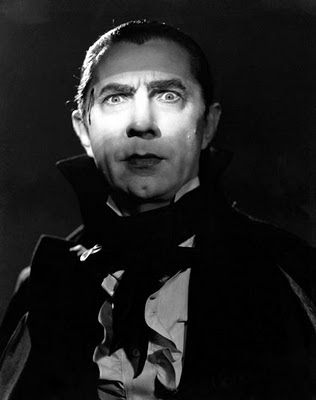Initially, the studio sought Lon Chaney, Sr., for the part, but cancer claimed Chaney before the great thespian could make the film. Lugosi landed the role for a minimal $500-a-week and he never topped "Dracula," though he came close with "White Zombie." Eventually, he would thrive in Poverty Row studio chillers and comedies and ended his career in director Ed D. Wood's preposterous "Plan 9 from Outer Space." Browning went on to make the controversial "Freaks" with genuine freaks about intrigue and murder in a small traveling circus. Universal produced "Dracula" for about $341-thousand, but curiously enough they neglected to capitalize on their surprise hit until four years later when they produced "Dracula's Daughter" with no Lugosi in sight. Granted, Van Helsing had destroyed the Lugosi monster in the first film, but later films dismissed this consolation to realism. Lee's Dracula reconstitutes himself in virtually all the Hammer films.
"Dracula" opens with a long shot as a real-life, horse-drawn stagecoach threads its way through the Carpathian Mountains. Renfield (Dwight Frye of "The Doorway to Hell") is a London real estate agent who has come to Transylvania with a lease for Count Dracula to sign. Renfield is riding with several other passengers when an anxious native explains that they must reach the inn before sunset. "It is Walpurgis night, the night of evil." He pauses and then continues, "Nosferatu. On this night, Madame, the doors-they are barred and to the Virgin we pray." Meantime, at the inn, the workers are reciting the Lord's Prayer in Hungarian. The coach pulls up at the Inn, but Renfield has no plans to stay. "I say, porter, don't take my luggage down. I'm going to the Borgo Pass tonight." The innkeeper struggles to persuade Renfield to remain until sunrise the following day because the coachman is frightened. Renfield explains that a carriage awaits him at midnight at the Borgo Pass. He adds that his destination is Castle Dracula. The innkeeper warns Renfield not to enter Castle Dracula. "We people of the mountains believe at the castle there are vampires! Dracula and his wives. They take the form of wolves and bats. They leave their coffins at night and they feed on the blood of the living." Renfield discounts all this hokum. He believes they are all superstitious, something that Renfield isn't. The innkeeper's wife thrusts a crucifix into Renfield's hand. "If you must go, wear this for your mother's sake. It will protect you." The crucifix was a standard weapon in any vampire hunter's arsenal. In this 1931 production, the crucifix can stop a vampire. When Universal Studios remade "Dracula" in the 1970s with Frank Langella, the crucifix bursts into flames in Dracula's presence.
Renfield swaps stagecoaches at Borgo Pass and rides off to Castle Dracula. The coach is making good time when Renfield peers outside and sees a huge bat flapping its wings in front of the horses as if it were leading the steeds. Once they reach the castle, Renfield searches for the coachman who is nowhere in sight. Of course, we know from the instant that we saw the coachmen that he is Dracula and can shape-shift. Renfield enters the imposing but dilapidated Castle Dracula. The count guides his guest through the cob-web infested premises to more comfortable quarters. Dracula scrutinizes the lease to his future home in Carfax Abbey. Afterward, Renfield cuts himself accidentally with a paper clip. Dracula darts forward impulsively at the sight of blood on Renfield's middle finger. Just as he closes in for the kill, Dracula shrinks backwards in revulsion at the sight of the crucifix that topples onto Renfield's bloody hands. Later, Dracula bites Renfield after the head vampire has scared off his three wives.
Dracula boards a sailing vessel, the Vesta, for London. He arrives in London and tours the town dressed up in a silk top hat and a cape. He approaches a flower girl and bites her, but we are shown nothing. Dracula introduces himself to Dr. Seward, Jonathan Harker, and Professor Van Helsing at the opera house. Not long afterward Dracula strikes and kills Lucy (Francis Dade of "Raffles"). The mirror scene where Van Helsing exposes Dracula is good. The count exits the premises as a wolf so nobody will follow him. Later, Van Helsing and Harker track Dracula down and kill him in his coffin. "Dracula" qualifies a spooky classic horror thriller.







No comments:
Post a Comment